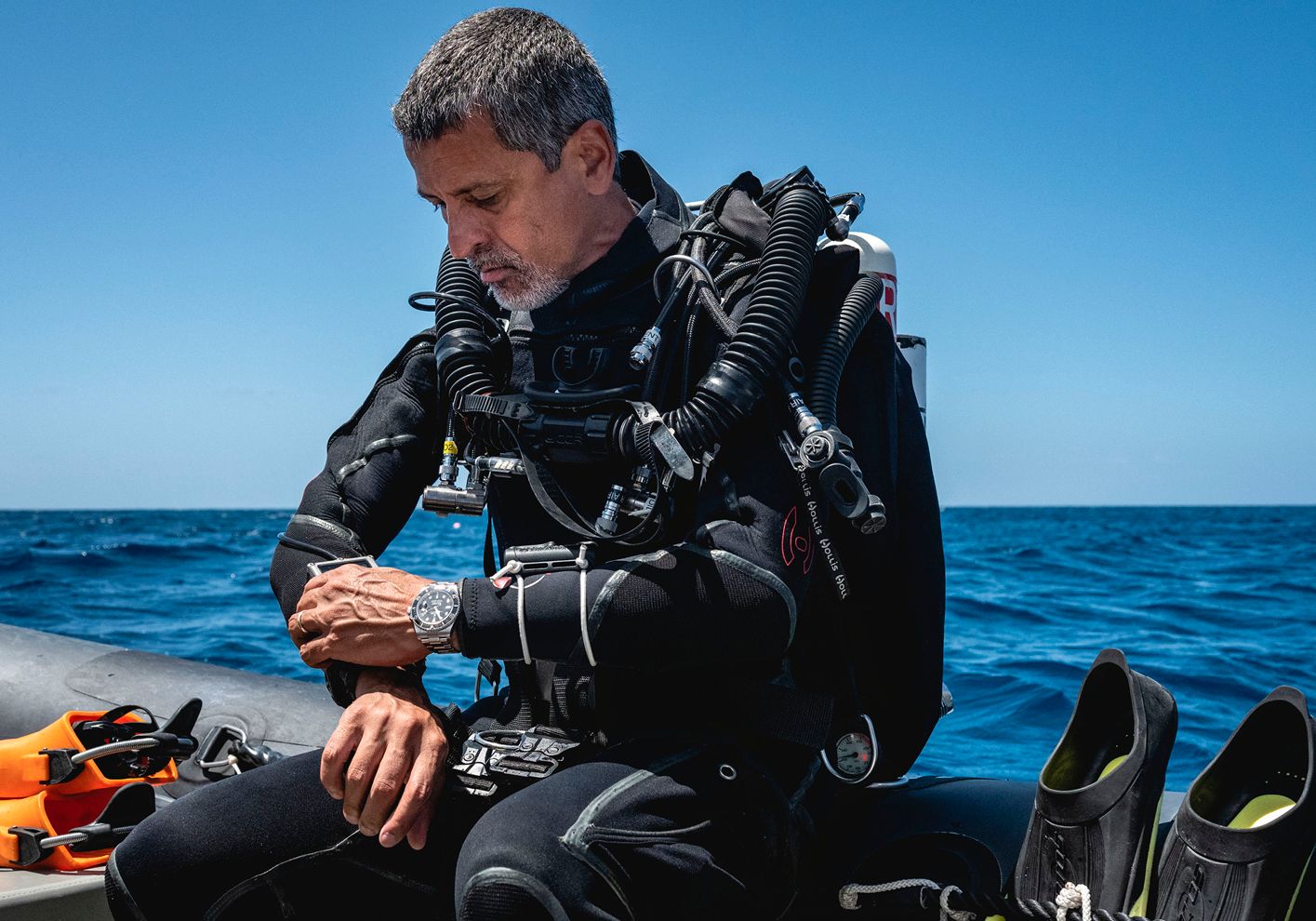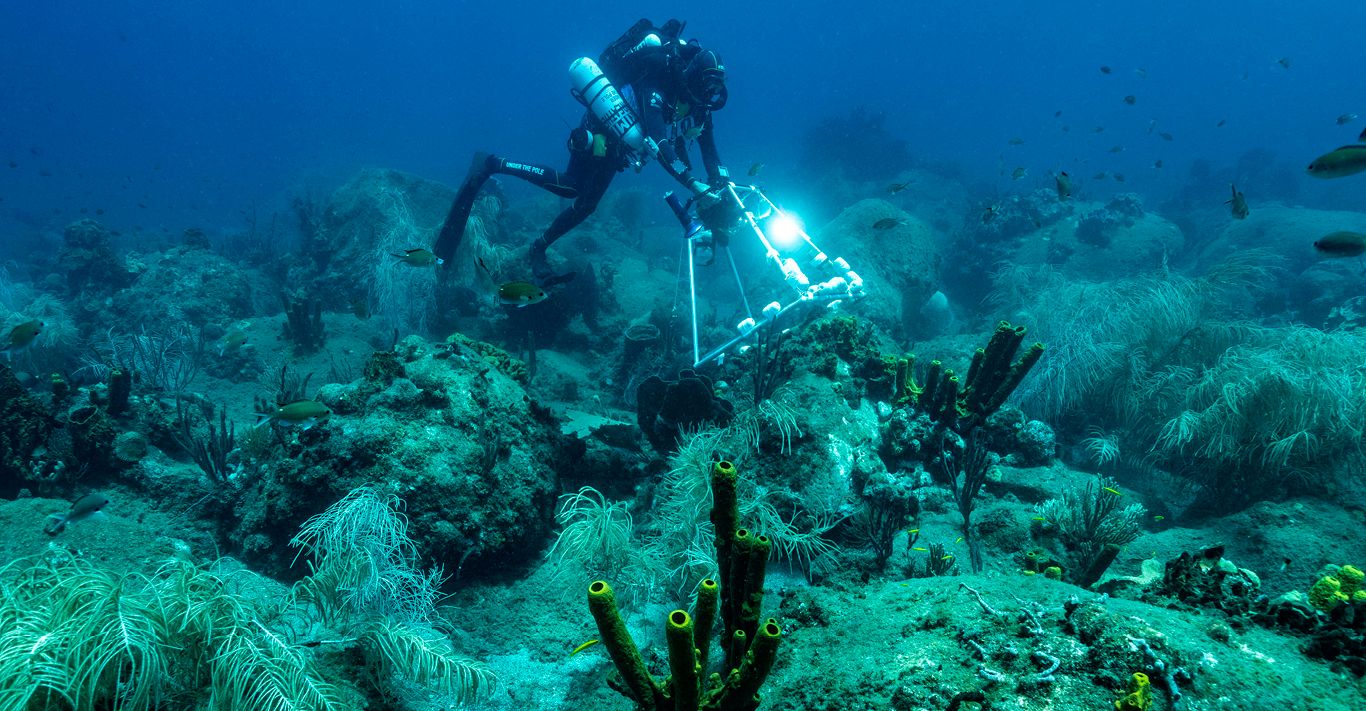WORDS
Peter Howarth
Luiz Rocha likens studying fish underwater from a submarine to trying to study birds in a rainforest from a helicopter. Rocha specialises in exploration of the mesophotic zone, the depth in the oceans below 30 metres (to around 150), which he calls ‘the twilight zone’ because of its lack of light. He explores, studies and raises awareness about deep reefs and their multitude of inhabitants, including countless species of fish, many of them never seen before. And he does so by diving.
Rocha is a Professor at the California Academy of Sciences, and a 2021 Rolex Awards for Enterprise Laureate. Earlier this year, I was privileged to witness his work in the Caribbean at the southernmost tip of Guadeloupe. The Brazilian had joined his friends and colleagues, French couple Ghislain Bardout and Emmanuelle Périé-Bardout, as they undertook the third leg of their Deeplife 2021-2030 expedition.
The Bardouts are the leaders and founders of Under The Pole expeditions, a project launched in 2008 that is now part of Rolex’s Perpetual Planet Initiative. Under The Pole takes its name from its first expedition in 2010 – a deep dive under the freezing ice of the geographic North Pole. Since then, the Bardouts and their team have conducted multiple dives to extraordinary depths, and the current expedition that I joined aims to explore all the world’s oceans. Deeplife 2021-2030 started in Svalbard in the Arctic Ocean and then moved to the Atlantic Ocean to the Canary Islands and then on to the Caribbean.

Like Rocha, the Bardouts specialise in discovering what lies below 30 metres. Rocha explains that 99 per cent of what we know about the oceans is only down to that depth because people can rarely dive beyond it. Ghislain Bardout and his wife routinely descend deeper, and in the Caribbean I observed two dives, one of which saw Ghislain reach 172 metres.
What he has discovered down in that mysterious aquatic world has confounded expectations. In the Norwegian archipelago of Svalbard, for example, he came across the first Arctic marine animal forest composed of hydroids (corals that resemble ferns, flowers and bells, and animals that are related to jellyfish) to be found there. Rocha explains that previously the thinking was that the further you journeyed into the twilight zone, because of the darkness, the less life you would find. The opposite has proved to be the case, with Rocha and the Bardouts uncovering a thriving world full of previously undiscovered species of fish, coral and sponges.
I witnessed the results of a day’s diving being analysed on board Under The Pole’s schooner base, the Why, which is home to the team when on expedition. With its crew of up to 18, comprising divers, scientists and the Bardouts’ two young children and their tutor, it’s a cramped living and working environment, especially as it has to house provisions and equipment for travelling and diving to last sometimes weeks at a time. But it’s well organised, and as I watched the team with its microscope study the coral and creatures retrieved from the deep at the table that also serves for below-deck meals, it was easy to get caught up in the excitement of discovery.
Rocha marvels at how Rolex could be supporting this niche area of oceanography, and explains how it was the watch firm that connected him with Under The Pole last year when he needed a diver skilled enough to descend further than he was capable of while conducting his own researches in the Maldives.
Since then, Rocha and the French divers have become colleagues. For his part, Ghislain Bardout explains how Rolex has supported Under The Pole from the outset. ‘I remember meeting with the team at Rolex who were older than me and much more experienced, and telling them of my crazy dream to dive under the North Pole,’ he explains. ‘And they thought about it and said, “Yes, we want to support your project”.’
Rolex has, of course, been supporting explorers for nearly a century. But with the Perpetual Planet Initiative it has evolved its criteria for involvement. Where once the firm was happy to assist humans to achieve extraordinary goals, now the aim is to help us discover things that will enable us to protect the planet. Today, Rolex supports those whose mission can add to the knowledge we require to help save the natural environment.
‘We can’t protect what we don’t know needs protecting,’ explains Luiz Rocha. ‘Most protection of the ocean habitat is around shorelines and down to 30 metres. That’s what people think of when they think of reefs. But there’s so much more, and if we discover what’s there, we can help protect and preserve it.’




